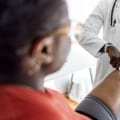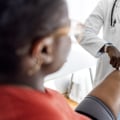Cramps, a bit like menstrual cramps, are very common early in pregnancy. They are usually caused by changes in hormones and by the growth of the uterus. Headaches during pregnancy are common, especially in the first trimester, when the most important hormonal changes occur. Other causes include increased blood volume, the stress of adjusting to pregnancy, and even not drinking enough fluids or resting. Pregnancy can cause many changes in the body.
From the moment you receive the good news of your baby's arrival, you may begin to notice common discomfort and early symptoms of pregnancy. But don't worry, it's a sign that your body is creating a healthy environment for your baby to grow. During the first trimester, from the first week to around week 13, many women experience nausea, heartburn, back pain, leg cramps and other pregnancy symptoms, said Dr. Rebecca Alicandro, an obstetrician and gynecologist at Rochester Regional Health.
However, there are things women can do to reduce discomfort and help them feel better. Stomach (abdominal) pain or cramps are common during pregnancy. They're not usually a cause for concern, but sometimes they can be a sign of something more serious that needs to be checked out. That usual discomfort in the lower abdomen may not be your menstrual period. It could be pain early in pregnancy, a common source of “cramping confusion.” While they may feel similar, there are subtle differences.
Menstrual cramps are usually more intense and throbbing and start just before menstruation. In contrast, cramps early in pregnancy are usually milder, more like a dull pull or pressure, and may start a week before the expected period. They usually come and go. The following table highlights the key distinctions.
This is an infographic that visually explains the main differences between menstrual cramps and pregnancy cramps, including the timing, sensation, and associated symptoms, such as nausea or spotting. So what does normal pain feel like early in pregnancy? This is usually dull pain or mild pelvic pressure, less severe than menstrual cramps. The discomfort is usually intermittent, coming and going. You may also feel a pulling or tingling sensation as your uterus begins to change. Some women experience brief, sharp pain that, while surprising, is usually harmless.
These pains should be mild and not accompanied by other worrisome symptoms. For a broader understanding of what to expect, we have a resource on What are the most common early signs of pregnancy? One of the first types of pain in early pregnancy is cramps during implantation, which occurs when the fertilized egg attaches to the uterine wall. This usually happens 6 to 12 days after conception, often even before you've missed a menstrual period. Cramping is usually very mild, such as a slight pull or light pressure.
Some women also have minor bleeding or spots during implantation (pink or brown) that last only a day or two. While these are interesting early signs, only a positive pregnancy test can confirm pregnancy. For more information about what to expect in the first trimester, visit Learn more about what to expect in the first trimester. Knowing that these types of pain early in pregnancy are often benign can be comforting.
Round ligament pain is a common and distinctive type of pain in early pregnancy. This is a sharp, throbbing pain or spasm in the lower abdomen or groin, often triggered by sudden movements, such as coughing, sneezing, or standing up too quickly. It is caused by the rapid stretching of the ligaments that support the growing uterus. While surprising, this pain is harmless and usually lasts only a few seconds.
If the pain is severe or persistent, you should consult your doctor. Learn more about What does round ligament pain feel like? For more information, see our guide to the fourteen warning signs for pregnant women and this medical summary on the causes of pelvic pain. An ectopic pregnancy is a fundamental cause of pain in the early stages of pregnancy. It occurs when a fertilized egg implants outside the uterus, usually in a fallopian tube. This is a medical emergency that can be life-threatening if the fallopian tube ruptures.
If you have these symptoms, especially if you have known risk factors, seek medical help right away. We take all abdominal pain during pregnancy very seriously. If you have pain early in your pregnancy, you may wonder if it will continue. While every pregnancy is unique, research shows some patterns. Experiencing pain in the first trimester may be an indicator of similar discomfort in the future.
Common problems, such as back pain and pelvic girdle pain, that start early can persist or intensify as the body changes. Other factors that may influence subsequent pain include self-assessed fitness level, age (over 30), and whether this is your first pregnancy. Scientific research on predicting pain also shows that the overall assessment of a person's health status early in pregnancy correlates with subsequent pain levels. The key takeaway is to be proactive. If you're in pain early in your pregnancy, talk to us. We can develop strategies to help you manage discomfort during pregnancy.
Early intervention can make a significant difference in your overall experience. For one of the most common complaints, see our resource on back pain during pregnancy. Cramps during implantation are usually very mild and occur 6 to 12 days after conception, often before the due date for the period. You may feel a slight pull, tingling, or dull pain in your lower abdomen that comes and goes.
This may be accompanied by light pink or brown spots. While these are possible early signs, only a positive pregnancy test can confirm that you're pregnant. You should always consult your doctor before taking any medication while pregnant. Acetaminophen (Tylenol) is generally considered to be the safest option for pain relief. However, you still need professional medical advice about the dosage and the appropriateness for your situation.
Avoid NSAIDs, such as ibuprofen and aspirin, unless your healthcare provider specifically tells you to, as they may not be safe. For more information, see our guide on pregnancy with medications. Women who experience back pain, leg cramps, pain in the pelvic cavity, pain in the pelvic girdle, and uterine contractions in the first trimester are at greater risk of pain later in pregnancy. Back and pelvic cavity pain increased in women who had self-evaluated their low physical fitness and who had obtained low scores on the well-being index of WHO-5.







